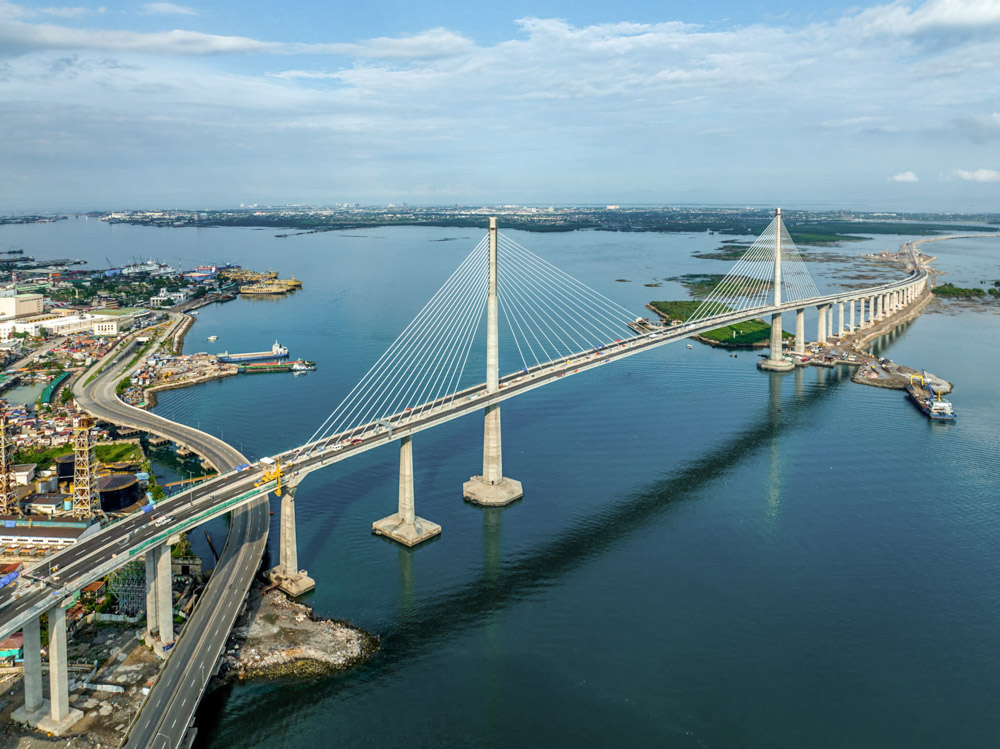
Last Wednesday, April 27th, with the presence of numerous authorities, the Ambassador of Spain in the Republic of the Philippines Mr. Jorge Moragas and the CEO of Acciona Mr. Luis Castilla among others, the President of the Republic of the Philippines Mr. Rodrigo Duterte officially inaugurated the Cebu-Cordova Link Expressway (CCLEX) and its iconic bridge, a project that will significantly improve mobility in the province and boost local economy.
The 8.9 km Cebu-Cordova Highway links Cebu, the second largest city in the Philippines, with Cordova on the Mactán island. More than 40.000 vehicles are expected to use the road daily, reducing travel time between Mactan and Cebu International Airport by 40 minutes and relieving the congestion at existing crossings between islands.
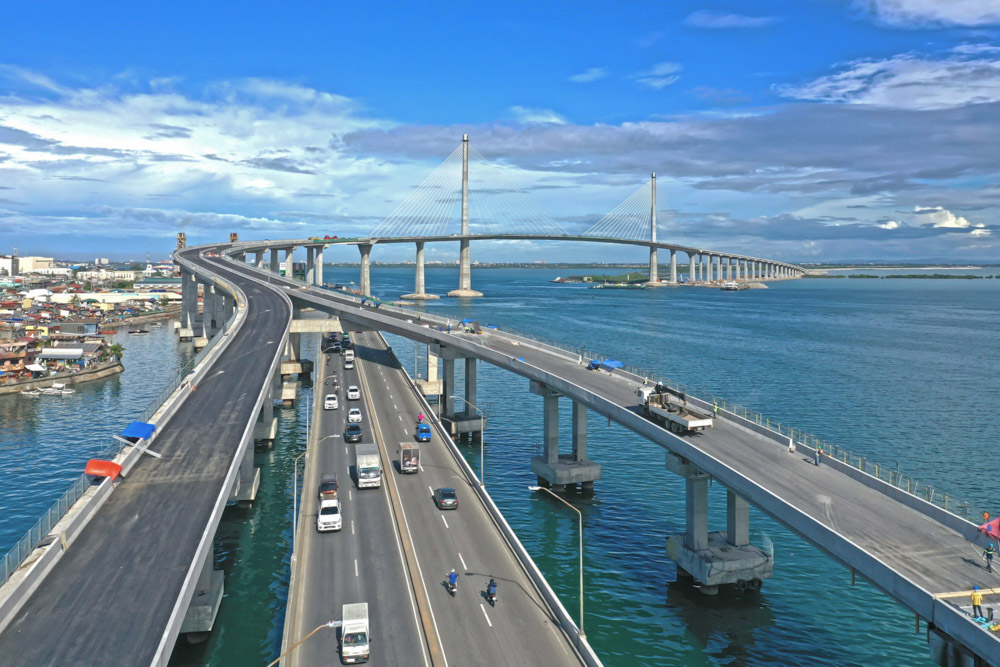
“This state-of-the-art infrastructure will provide a solution to the perennial traffic issues of Metro Cebu. I am hopeful that this will also result in an increase in economic productivity in the province and the rest of Visayas, through safer, faster, and more convenient means of transporting goods and people,” President Duterte said.
The work has been carried out by the CEBU Link JV (CLJV), led by ACCIONA together with the Philippine companies First Balfour and D.M. Consunji Inc, winner of the international competition for the construction of this new connection between the islands of Cebu and Mactan in the Philippines. The owner of this infrastructure is the concessionaire Cebu Cordova Link Expressway Corporation, owned by the Philippine group Metro Pacific Tollways.
The project, processed under the Early Contractor Involvement (ECI) modality, has had an approximate budget of 400 million USD. The tender took place in 2017 and, once the project was awarded, it was developed throughout 2018, starting the foundation works in that same year.
The inauguration was scheduled in 2021, coinciding with the fifth centenary of the arrival of Christianity to the islands with the presence of the Spanish expedition on the voyage of Magallanes and Elcano, however, due to the difficulties caused by Covid-19 it was delayed for a year.
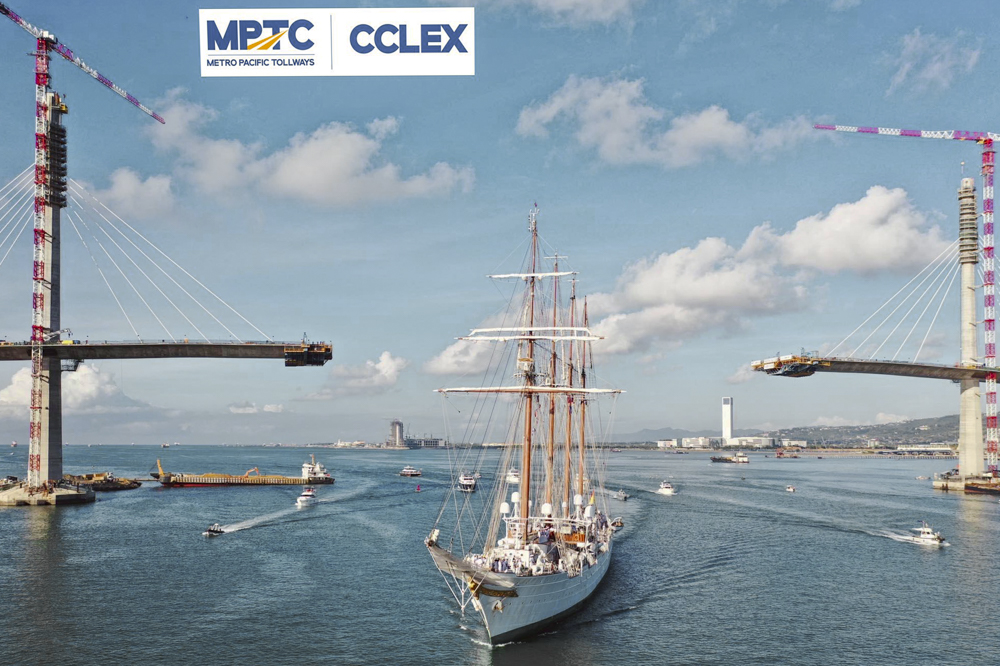
From the bidding phase to the end of construction, the engineering of the project has been carried out for CLJV by the SENER-CFC Joint Venture, with CFC being in charge of the study and development of the main cable-stayed bridge.
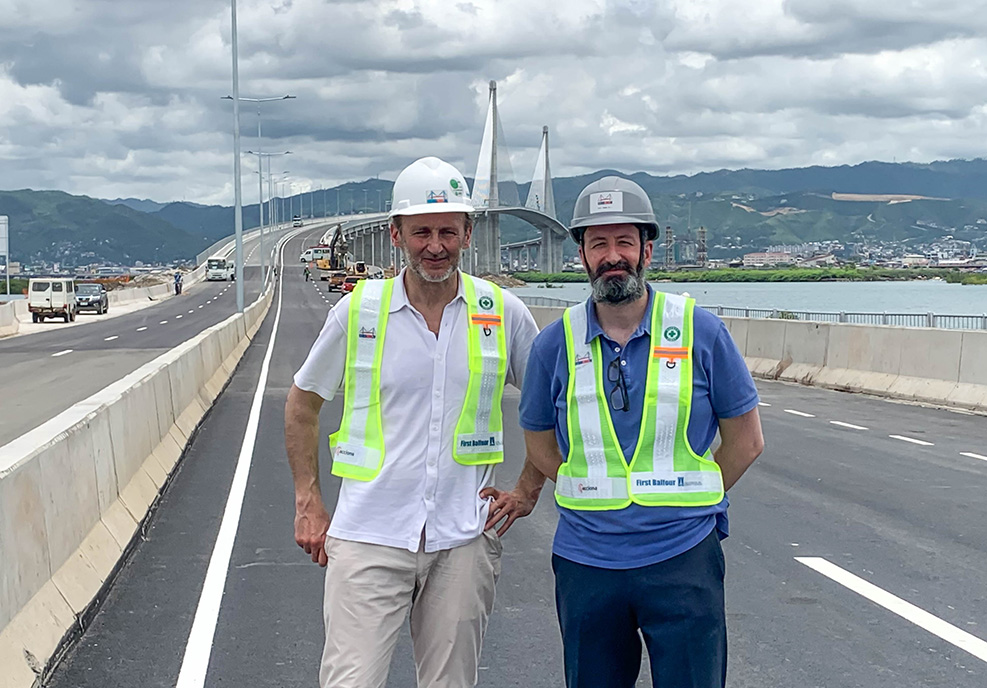
Javier Muñoz Rojas, CFC director present at the inauguration, together with the project manager during construction, José Manuel Domínguez, emphasizes the relevance of the project: “This work can be considered an example of what Spanish Engineering with capital letters -builders and designers- is able to achieve in international markets and is therefore an excellent presentation in Asia. The construction has been led by a cutting-edge firm like Acciona, supported by numerous Spanish groups at the forefront of their specialties: design and construction engineering -CFC, Sener, Acciona Ingeniería, Acciona Technical Services- independent reviewers -Fhecor, Prointec- , specialized construction teams -Acciona Ingeniería, Rubrica, Ulma-, wind tunnel tests -UPM- ….etc. In short, an example of what we are able to do and add together”.
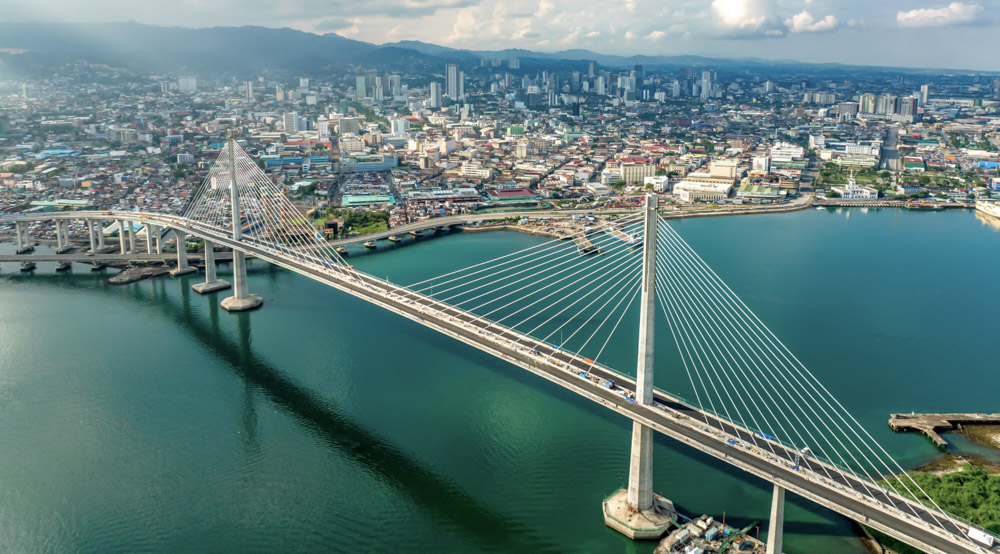
The solution proposed by CLJV during the tender phase, which was subsequently developed and built, is based on the reference design developed for Metro Pacific by Danish engineering company COWI. It established a main span of 390 m between the two central towers with stay cables supporting the hollow box deck. The shape of towers and piers was designed by the Dissing+Weitling studio, adopting octagonal sections with variable dimensions in towers and back span piers.
During the tender phase, CFC engineers together with Acciona’s technical services and their partners, analyzed the possibilities that, while respecting the minimum constraints required by the customer, would make it possible to enhance the efficiency of the structure and optimize its construction program. Consequently, some relevant adjustments were performed leading to a design with a configuration of side spans, distribution of stay cables, anchors, links between super and substructure, deck section, intermediate piers, foundations etc, substantially different from the reference design.
The solution finally built is a symmetrical cable-stayed bridge 651.50 m long with a distribution of spans of 5.75-60-65-390-65-60-5.75.
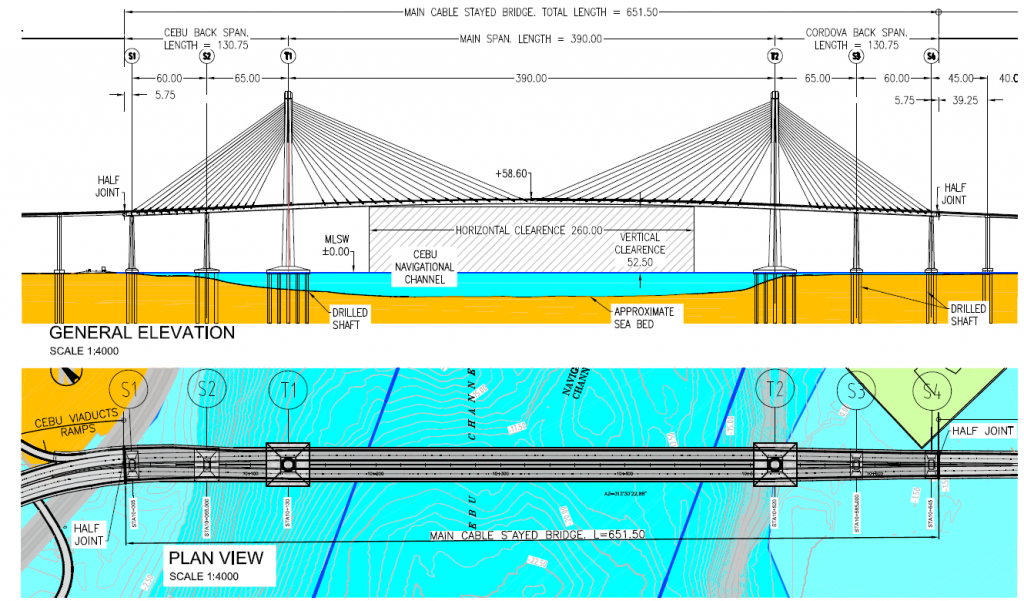
The spans of 5.75 m correspond to extensions from the final piers to accommodate half joints to support the transition sections between the main bridge and the prefabricated beams of the approach viaducts. The connections of the deck with towers and piers are monolithic except in the extreme piles, in which it is necessary to release the longitudinal movements but, due to seismic conditions, block all the others.
The unbalance of span lengths between the central span and the approaches has led to anchoring the board in the retention piers and to carry out mass concrete counterweights inside the section.
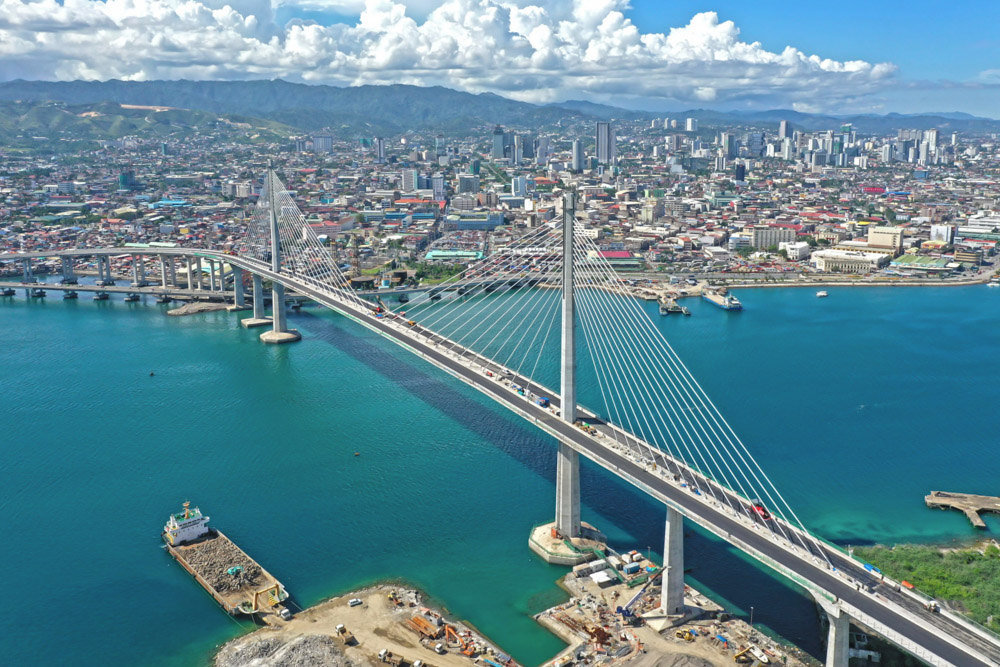
The deck is configured with a constant height prestressed concrete box section of 3.50 m and 26.90 m wide in most of the length. At one end it progressively widens up to 30.0 m to accommodate the ramps that connect with the trunk. On the other side it narrows up to 22.40 m to connect with the approaches to Mactan. It has been built by cantilevered advance with segments of 6.00 m in the central span and 7.50 m in the approach spans.
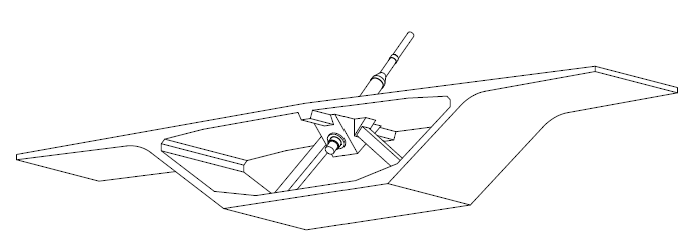
The section is slightly prestressed longitudinally for permanent situation by means of adherent interior units. During the construction, however, it was necessary to use a provisional pre-tensioning system carried out by means of external bars that were dismantled and reused according to the progress.
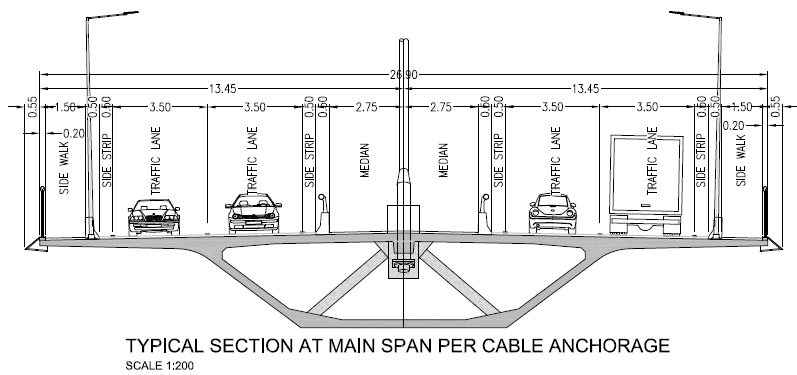
In the transverse direction it is not prestressed, resisting the stresses only with passive reinforcement.
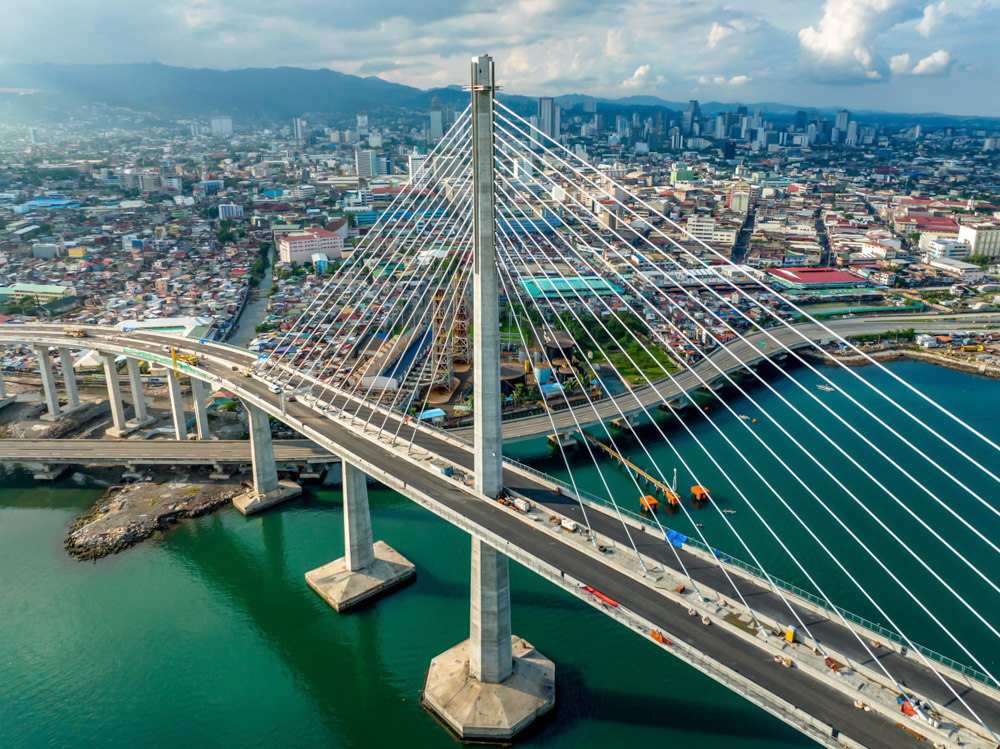
The cable-staying is comprised of 14 pairs of cables from the axis of the box to two vertical towers of 140 m of total height, 91 m above the deck. The number of strands in the cables varies between 68 and 118.
The cables are anchored inside the deck by means of a steel structure -delta frame- embedded in the slab and connected to the webs by steel diagonals. Anchorages in the towers are materialized with another steel structure connected to the concrete walls only on the front faces.
The section of the tower is octagonal with variable dimensions in both directions. In the upper part, steel plates are added externally so the geometry of a 40 m cross is drawn on each of the faces of the tower, an ornamental element foreseen in the reference design with which it is wanted to pay tribute to the importance of Cebu as the first place of presence of the Catholic church on the islands.

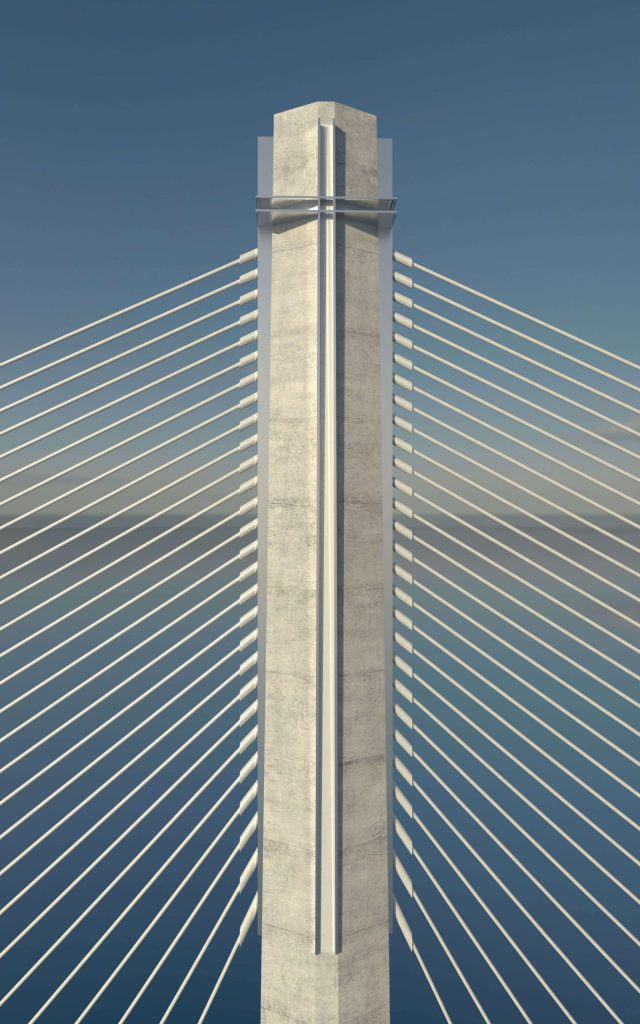
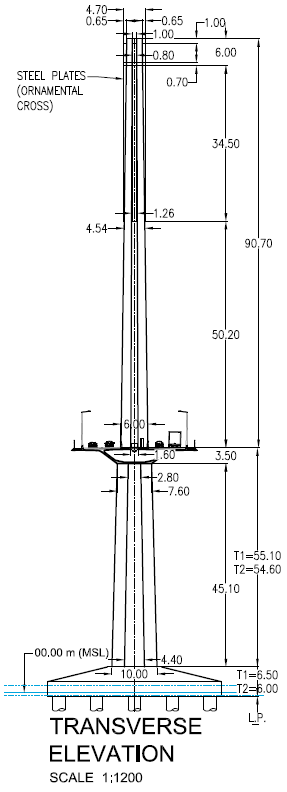
Drilled-pile foundations were designed once it was found out that the enclosures foreseen in the reference design was not adequate. Piles of large diameter, 2.00 and 2.50 m, more effective were used to resist the extraordinary horizontal reactions transmitted to the foundation under the seismic actions, wind and vessel impact. They delve into the substrates present in the area, in which under the recent clay and sandy deposits appear substrates of degraded coral rock and deposits of volcanic origin.
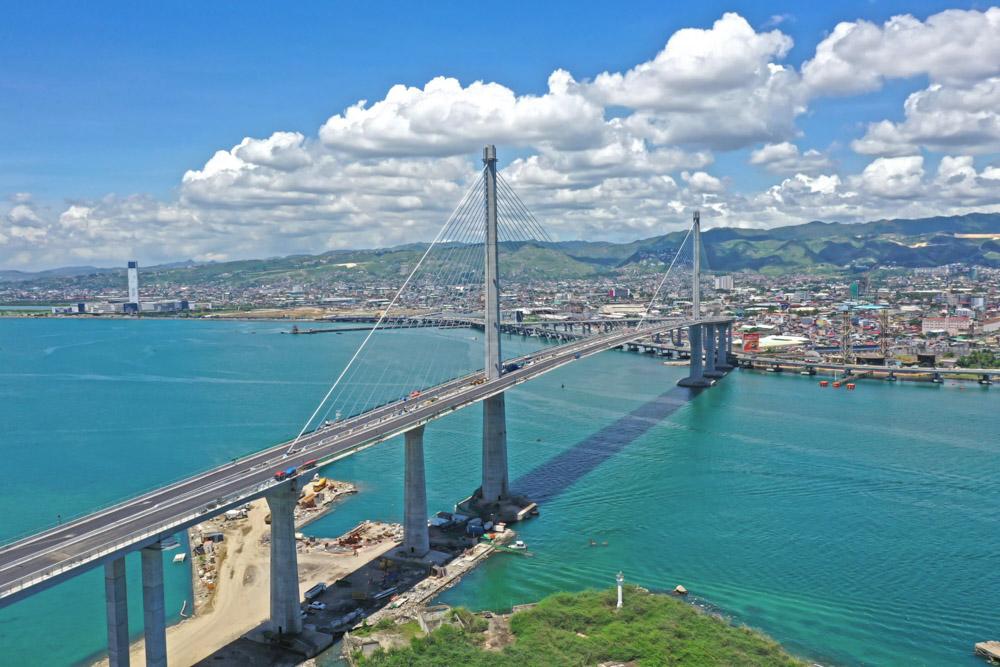
From the point of view of the design, the particularly unique conditions of this project have been the high seismicity of the area, the recurrent presence of strong winds as it is an area of typhoons and the heavy accidental impact loads of ships to be located on a navigation channel with intense traffic. Likewise, the accidental situations of cable loss and some intermediate phases of construction have introduced severe restrictions in the design.
The bridge has been designed to withstand winds of up to 250 km/h. Its aeroelastic stability was verified with wind tunnel tests at the facilities of the Polytechnic University of Madrid, where the structural response of the deck during strong winds, which is a constant concern in tropical regions, was studied to optimize the deck section shape.
On December 16, 2021, the island of Cebu was hit by a devastating category five typhoon called “Odette” with maximum three-second gusts of approximately 240 km/h, including Cebu City and the CCLEC project area. The bridge, whose deck had already been closed, did not suffer any damage, while huge damages occurred in the city and the island. In any case, the structure had also been tested so that it could withstand these extraordinary winds during the construction before closing the cantilevers.


